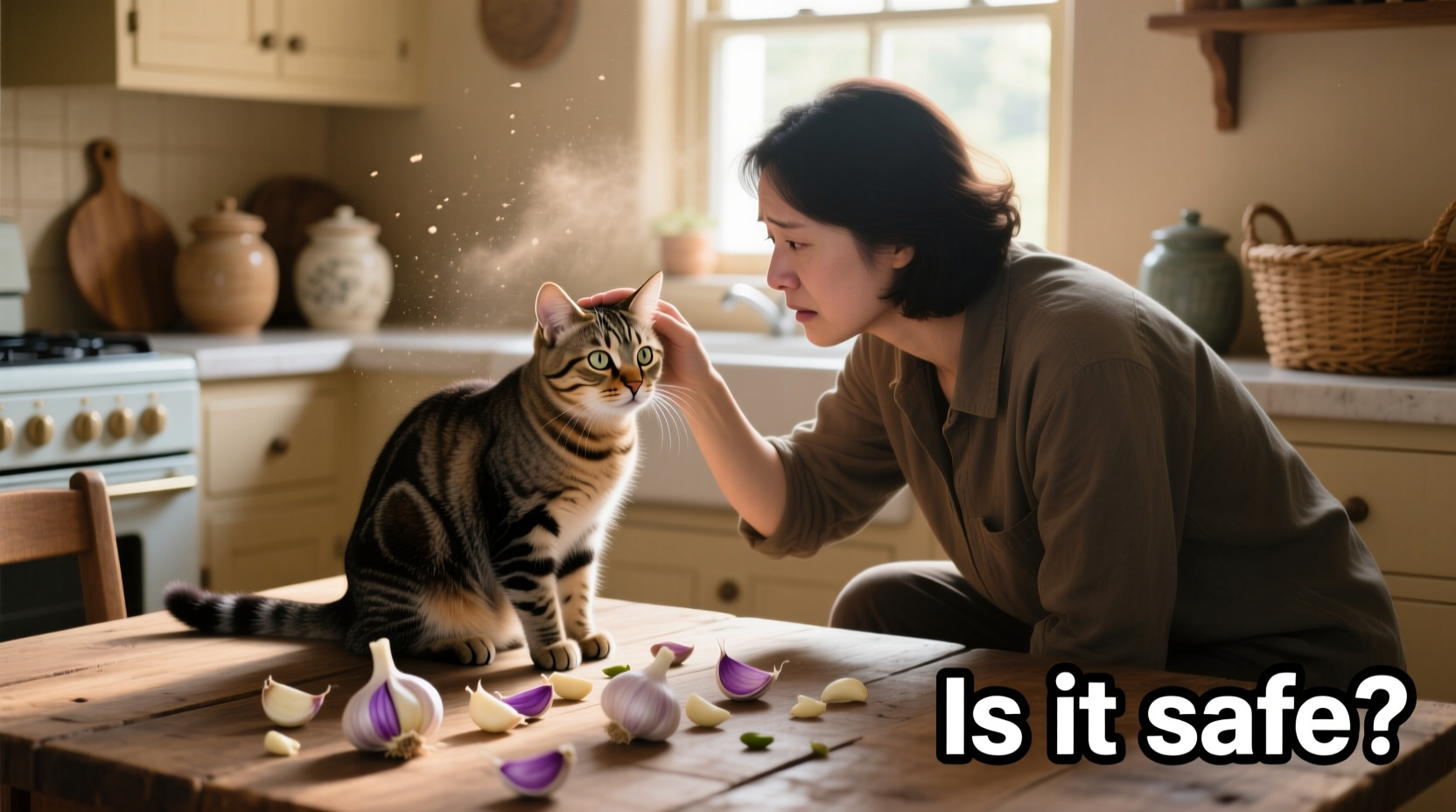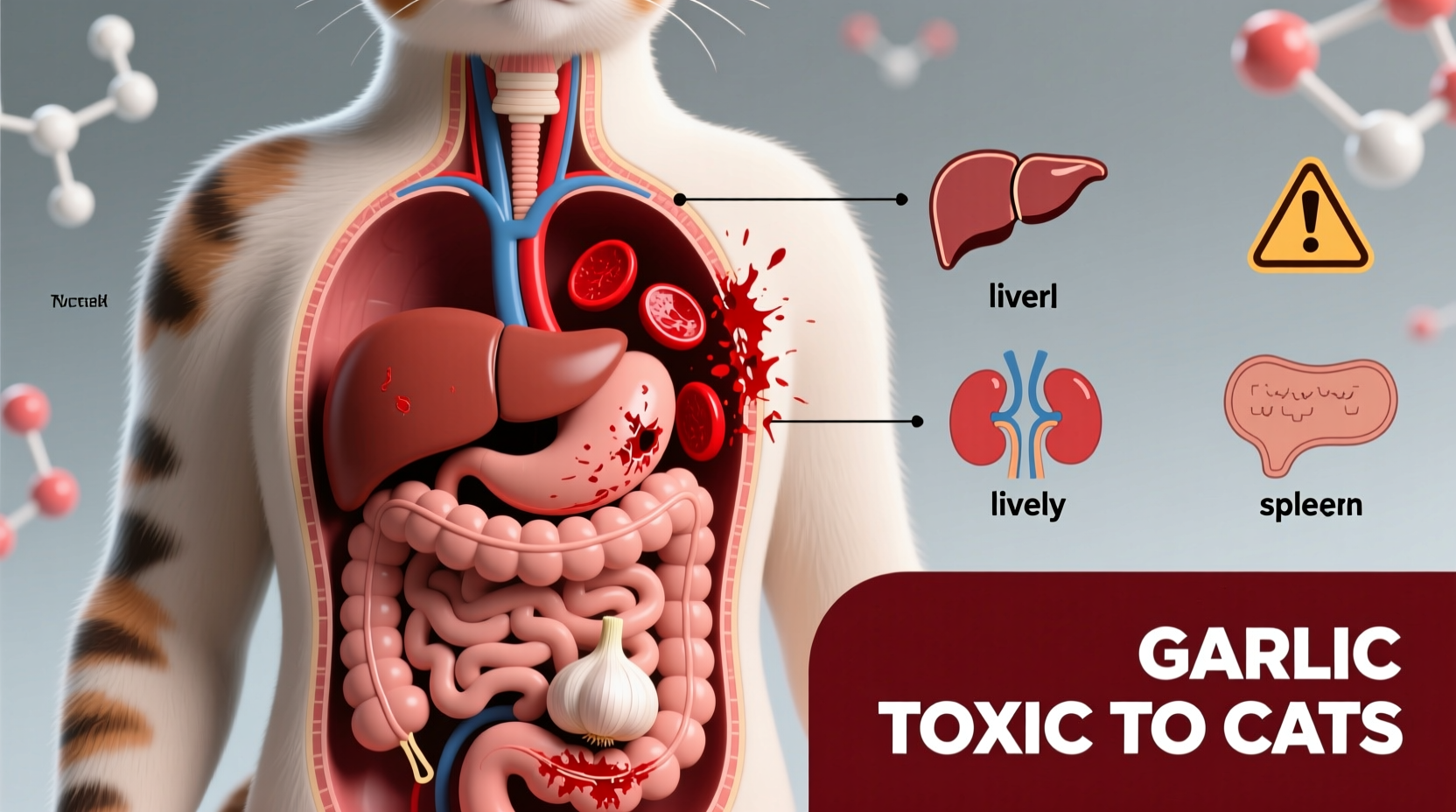As a cat owner, discovering your feline companion might have ingested something dangerous creates immediate panic. Garlic toxicity represents one of the most common yet preventable household poisonings in cats. Understanding the science behind this danger and recognizing early warning signs could save your cat's life.
Why Garlic Poses a Serious Threat to Cats
Garlic belongs to the Allium family, which includes onions, leeks, and chives—all toxic to cats. The dangerous compound, N-propyl disulfide, oxidizes hemoglobin in red blood cells, causing them to rupture. This process, called hemolysis, leads to hemolytic anemia, where insufficient oxygen reaches vital organs.
Unlike humans who can metabolize these compounds safely, cats lack the necessary enzymes to process Allium toxins. This biological vulnerability means even seemingly harmless amounts become dangerous. According to the ASPCA Animal Poison Control Center, garlic is approximately five times more toxic to cats than onions.
| Garlic Form | Toxic Amount for 10lb Cat | Onset of Symptoms |
|---|---|---|
| Raw garlic cloves | 1-2 cloves | 24-48 hours |
| Garlic powder | 1/4 teaspoon | 12-24 hours |
| Garlic oil | 1-2 drops | 12-24 hours |
| Cooked garlic | 1 teaspoon | 24-72 hours |
Symptom Timeline: What to Watch For
Garlic poisoning symptoms don't appear immediately, creating dangerous false security. The progression typically follows this pattern:
- First 12 hours: Vomiting, abdominal pain, drooling (if recently ingested)
- 24-48 hours: Lethargy, weakness, rapid breathing, pale gums
- 3-5 days: Dark urine (hemoglobinuria), jaundice, collapse
The delayed reaction occurs because red blood cell damage accumulates over time. By the time symptoms appear, significant damage may have already occurred. The Veterinary Information Network emphasizes that early intervention dramatically improves recovery chances.

Immediate Action Steps If Exposure Occurs
If you suspect your cat consumed garlic, follow these critical steps:
- Document everything: Note the time, amount, and form of garlic ingested
- Contact emergency veterinary care immediately: Do not wait for symptoms
- Bring packaging or samples: Helps veterinarians determine toxin concentration
- Do NOT induce vomiting: Unless specifically instructed by a vet
Treatment typically involves intravenous fluids, oxygen therapy, and in severe cases, blood transfusions. The Cornell Feline Health Center reports that with prompt treatment, most cats recover within 3-7 days, though severe cases may require extended hospitalization.
Hidden Sources of Garlic in Your Home
Cat owners often unknowingly expose their pets to garlic through:
- Human foods left on counters (garlic bread, pizza, sauces)
- "Healthy" pet supplements containing garlic for flea prevention
- Leftover meals in trash cans
- Homemade pet treats with garlic powder
- Garlic plants growing indoors
Many commercial pet foods and supplements misleadingly include garlic, claiming health benefits. The American Veterinary Medical Association explicitly states there is no safe level of garlic for cats and warns against products making such claims.
Safe Flavor Alternatives for Cat-Friendly Cooking
When preparing homemade cat food (under veterinary guidance), use these safe flavor enhancers instead of garlic:
- Catnip (in moderation)
- Low-sodium chicken or fish broth
- Cooked, unseasoned meats
- Small amounts of cooked pumpkin
- Freeze-dried meat treats
Always consult your veterinarian before introducing new foods to your cat's diet. Remember that cats have different nutritional requirements than humans, and "healthy" human foods can be dangerous for them.
Preventing Future Garlic Exposure
Implement these safety measures to protect your cat:
- Store garlic and onions in closed cabinets away from counters
- Use pet-proof trash containers
- Read all pet food and supplement labels carefully
- Inform all household members about garlic dangers
- Avoid growing garlic plants indoors
Education remains the most effective prevention tool. Share this information with fellow cat owners to prevent accidental poisonings. The Pet Poison Helpline reports a 30% increase in garlic-related cat emergencies during holiday seasons when human foods containing garlic are more prevalent in homes.











 浙公网安备
33010002000092号
浙公网安备
33010002000092号 浙B2-20120091-4
浙B2-20120091-4